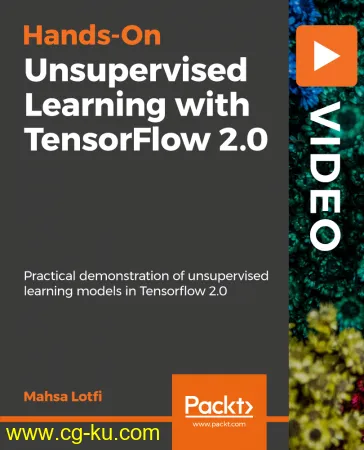Duration: 2h 30m | Video: h264 1920x1080 | Audio: AAC 48kHz 2Ch | 367 MB
Genre: eLearning | Language: English | September 16, 2019
Learn unsupervised learning in Python with hands-on practical applications for each learning model.
Learn
The fundamentals of unsupervised learning algorithms and their importance
TensorFlow 2.0 terminology
Hands-on experience solving real-world problems in unsupervised learning
A practical approach to solving business problems, ranging from data preprocessing to model-building from a given dataset
About
Nowadays, machine learning is becoming increasingly important to businesses. It is used to solve various business problems using supervised and unsupervised algorithms. In unsupervised learning, Artificial Intelligence systems try to categorize unlabeled and unsorted data based on the similarities and differences that exist among data. In this case, the capabilities of unsupervised learning methods to generate a model based on data make it possible to deal with complex and more difficult problems in comparison with the capabilities of supervised learning. In this course, we examine different unsupervised learning methods and solve practical problems using the TensorFlow platform. Solving examples of real-world problems using TensorFlow is more inspiring and compelling and will enhance your practical skills.
By the end of this course, you will gain significant hands-on experience using unsupervised learning algorithms with TensorFlow and will be able to make your own model to solve relevant real-world learning problems.
All the code and supporting files for this course are available on GitHub at
Features
Acquire an in-depth understanding of unsupervised learning models and their various types
Learn how to implement different unsupervised learning algorithms using Python and the TensorFlow library
Build unsupervised learning models for more complex problems based on the simple examples in this tutorial

发布日期: 2019-09-17